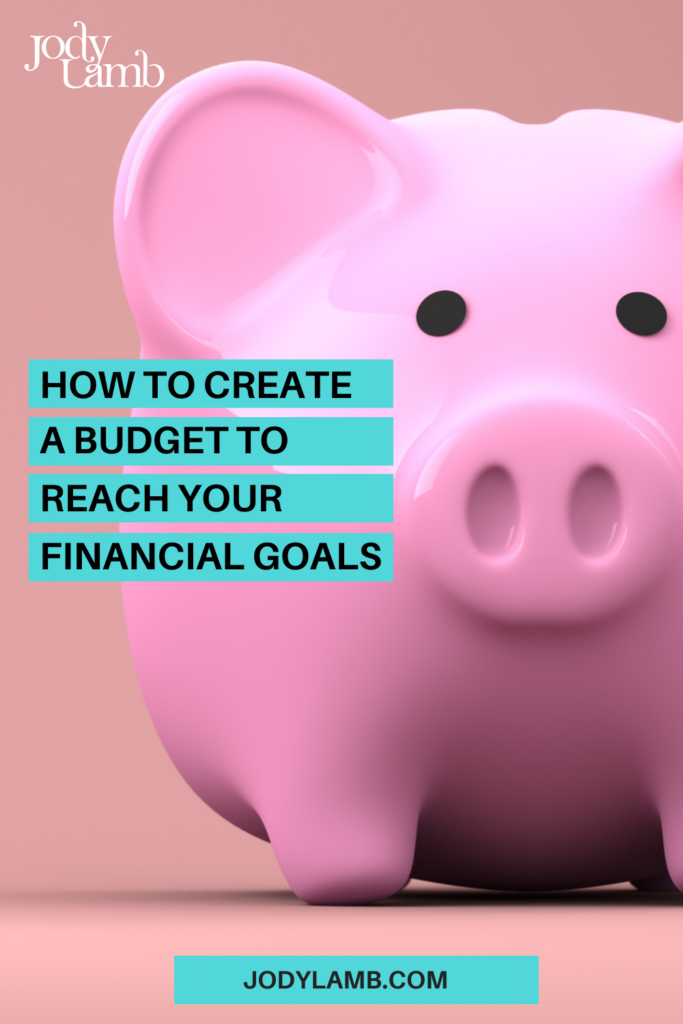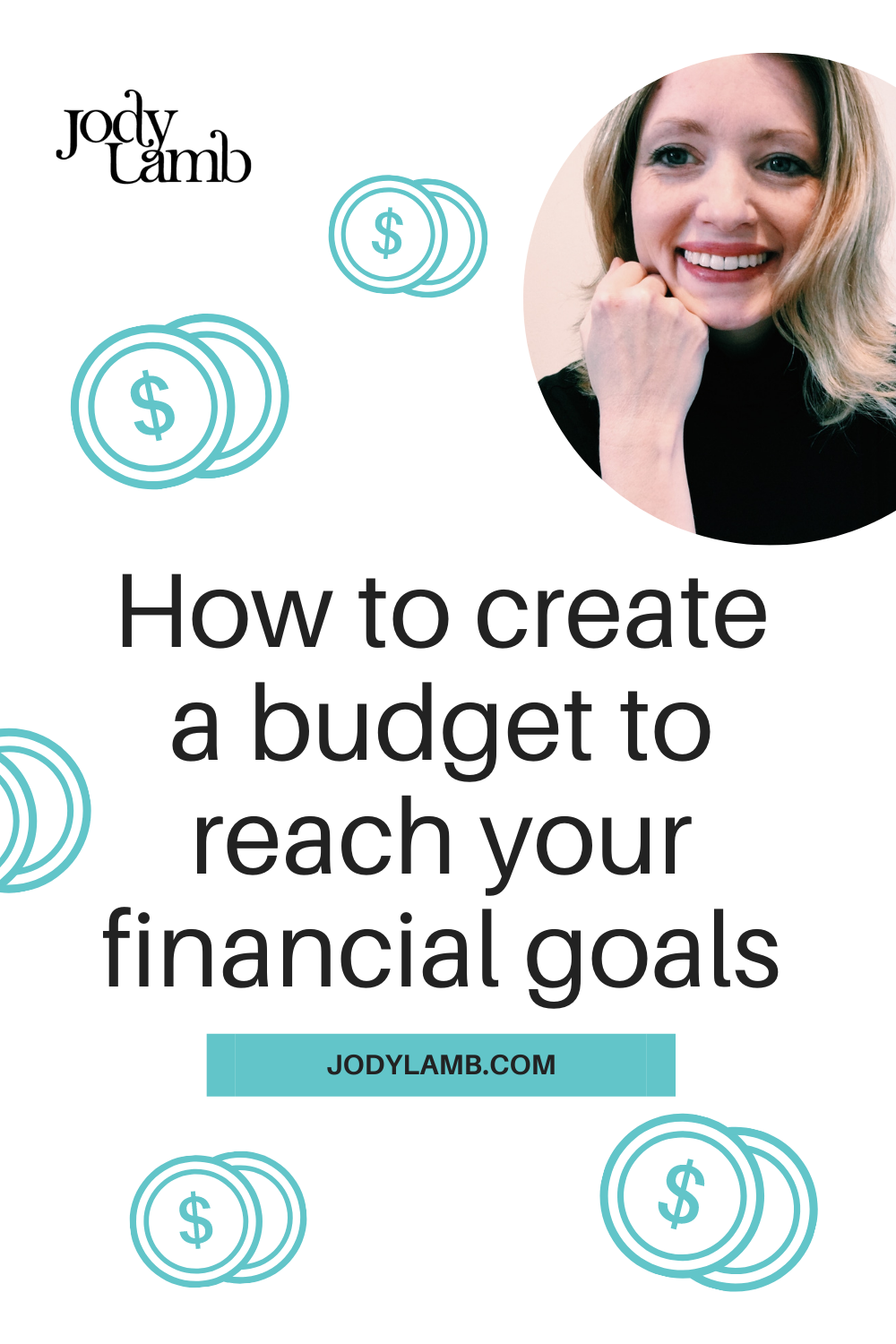How to create a budget to reach your financial goals
What are your big financial goals? Buying a house? Trip around the world? Kids’ education? Start a business? Get out of debt?
If you’re anything like me, you landed in grownup land with limited financial education. My parents always struggled financially, and they did not have the know how to teach my sister and me the money skills I’ve since learned on my own. Through my personal growth journey, I’ve read a lot about personal financial planning. Holy moly, were my eyes opened fast to how much I had to learn! Fortunately, there are so many books and free resources available online today that it’s easy for all of us to get financially educated.
A couple of years ago, I posted a video about how I spent most of my adult life lacking money-management skills. I’ve never been the type to overspend on unnecessary things, but I have a terrible history of being talked into extra spending by salespeople. People-pleasing adult child of an alcoholic here! However, since then, I’ve learned the importance and power of a budget and that knowledge has helped me minimize those situations.
Defining a Personal Budget
A personal budget is a great way to assess and monitor your finances on a monthly basis, while also tracking your spending habits. You can design a personal budget any way that works best for you, but be sure to include these key elements:
- Current Income
- Fixed and Variable Expenses
- Emergency Fund
- Savings
Here are my top tips for creating a budget to help you achieve your financial goals:
Start With Your Income and Expenses
Starting with your current gross income, subtract all benefits and 401K investments to determine how much money you bring in on a monthly basis. Total your fixed expenses, which typically include rent, transportation, utilities, and maintenance, and estimate your variable costs, which often consist of entertainment and hobbies. This end total will be your expendable cash. Keep your savings in mind when it comes to delegating it within your budget, with most financial planners encouraging the 50/30/20 rule. 50 percent of your budget is accounted for by your fixed and variable expenses, 30 percent is free to spend on entertainment, and 20 percent is set aside into a savings account. If you haven’t already, set up a savings account with your bank and refrain from withdrawing unless necessary. This system is also a great way to reduce the chances of overspending beyond your budget, and ensures all debts are accounted for prior to spending on “wants.”
My bank has a spending tracking tool tied to my debit and credit card that alerts me when I’m nearing or over my budget for a particular category. If your bank doesn’t have that, there are several free apps you can connect to your account to do the same thing for you.
Determine the Best Type of Budgeting for You
Your budget should depend on your current lifestyle and needs, making it important to research the various budget options. The most common methods include:
- 50/30/20 or 80/20 Rule
- Pay Yourself First or Reverse Budget
- Zero Based Budgeting
- Envelope Method
Use a digital spreadsheet or a written list to organize the above information in a way that makes it easy to digest monthly financial statements and overall health. With this comprehensive outlook into the money you have for saving or spending, you can then determine the right budget for your current lifestyle.
Blogger Kalli Branciforte has helpful information about her financial planning journey and free budget tools. I like her free money tracker tool.
Be realistic about your budget. It’s a lot like exercising or anything else that requires commitment to a habit. If you can’t imagine life without your Netflix subscription during these pandemic days, keep it in your budget.
Like the 50/30/20 rule, the 80/20 rule divides up your income into 20 percent savings and 80 percent spending. This simplistic approach immediately removes your savings from your expendable income and determines areas in the 80 percent in which you spend the most to focus on the large expenses and ways to cut back. The Reverse Budget works similarly in that you pay yourself first by putting more focus on your savings prior to expenses and luxury spending.
Zero based budgeting, on the other hand, allocates every dollar that comes into a specific expense. When trying this budgeting method, your expenses should be equal to your income. This applies to the last option, the envelope method, as well, by forcing you to choose a purpose for every dollar you earn and placing these expenditures in different categories. You can organize these categories into physical envelopes, giving you physical cash to spend until there is no more left in the envelope, or you can place them into individual bank accounts.
I have not yet personally used the envelope method, but I think I should soon. Last week, the lady in line in front of me at the grocery store was using it. I asked her if not using her debit or credit card helped her control spending more effectively. “I started doing this three years ago,” she said. “I could never go back. It makes a huge difference because it forces you to pay attention to every item you put into your cart!” What am I waiting for?!
Map Out Your Goals
Once you have a budget created, you can begin planning for your future! Whether it’s to get married, make a career change, or buy a home, begin listing milestones you would like to accomplish in the next five to 10 years, and then move on to longer-term goals.
Around these lists, design a timeline that helps map out when and how you will afford each step. Estimate future costs and how long each will last and establish savings that will cover initial costs and set you up for a shorter-lived payment. This also aids in helping you figure out what you can afford. For example, if you plan on buying a home in the near future, analyze your budget and your loan options to determine how much you can realistically afford. This will help narrow down your options and prevent further setbacks.
One of my longtime financial goals was to buy my own home. In 2016, I contacted a mortgage company and was pre-approved for a HUGE loan. It was exciting and terrifying! It is super important to recognize that the mortgage amount you’re pre-approved for may not what’s best for your budget. Spend time really studying how much you can afford. I bought a house in 2017 with a loan that was much smaller than what I had been pre-approved for, and I am soooo glad I made that decision.
Take this time to also invest in yourself. Consider continuing your education or taking on learning opportunities that expand your career goals and assist in achieving money-related goals. Planning for retirement can be looped into this step as well. Reach out to your employer to see the benefits and 401K options they offer to get you started on the right foot! Most retirement plan providers have great on-demand webinars, videos and other resources on their websites.
Save for a Rainy Day
Building a budget and healthy savings is no small task, and it takes commitment and organization to be financially stable. Having an emergency fund is often an afterthought, but it’s important to keep yourself afloat in times of financial stress. An emergency fund should be separate from your traditional savings account and can be in the form of investments like a Roth IRA or a stand-alone bank account that is out of sight, out of mind. Whichever option you choose, ensure you have at least six months’ worth of living expenses in case, like the name entails, there is an emergency.
It’s also important to continuously track your spending when it comes to saving, which includes updating your budget based on fluctuating incomes, lifestyle changes, or after incurring large costs. If you find yourself struggling, use helpful resources like banking or investment apps, or reach out to a financial advisor for help. Your financial health is important, so don’t be afraid to seek professional assistance to keep you on track toward your goals.
Creating more income
During this budget work, you may discover that you need to bring in more income. I’m continually amazed by all of the side gigs that can generate money that really adds up! My friend is a Facebook Marketplace guru. She buys things at thrift stores and spiffs them up with paint and then sells them with a markup to people who are delighted with her treasures. Blogging is also a great way to earn extra income. See my free step-by-step guide on setting up a blog.
There are so many great bloggers sharing insight into how you can make money in your spare time. Check out the Making Sense of Cents blog and Rachel Cruze’s articles and videos, Chalene Johnson’s resources and Chris Guillebeau’s book, The $100 Startup, for inspiration.
Whatever your financial goals are, I wish you success in achieving them!








Great guide! Thank you for sharing this knowledge with us!
I can totally relate to your experience of entering adulthood with limited financial education. It’s incredible how much there is to learn about personal financial planning. I appreciate your emphasis on the abundance of books and free online resources available for everyone to become financially educated. Your tips for creating a budget are practical and insightful, especially the breakdown of the 50/30/20 rule. It’s also refreshing to see you mention the importance of being realistic and flexible with your budget, allowing for small indulgences like a Netflix subscription. The different budgeting methods you shared provide a variety of options for readers to choose from based on their lifestyle and needs. Mapping out goals and creating a timeline is a crucial step towards financial success, and I appreciate your reminder to consider ongoing education and retirement planning.